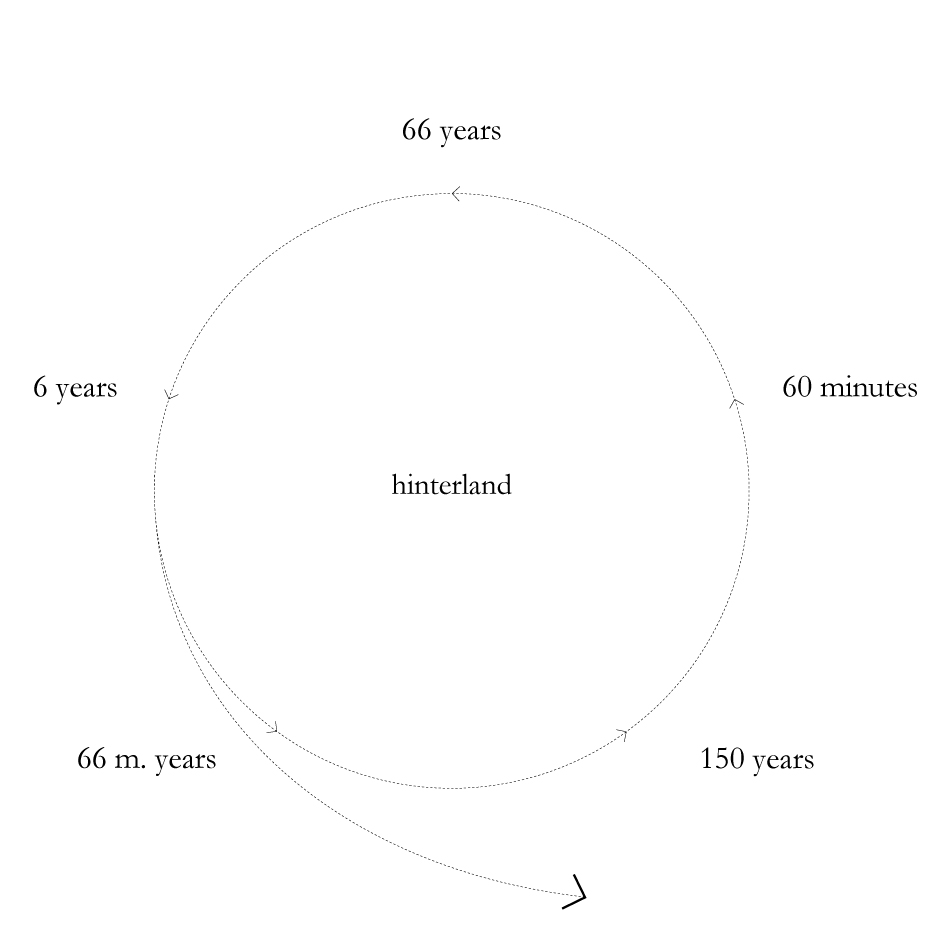66 MILLION YEARS
Hinterlands are places that undergo changes constantly – be it geological, ecological, economic, and sociological. Their characteristics are based on the dependence of their relationships with urbanization processes. Within the continuity of their existence, the hinterland’s productions and applications undergo numerous mutations, but the city/non-city relationship seems to persist. The current becoming of the hinterlands has reached a point of saturation. Any changes in their role will render them more vulnerable. Simultaneously, by having their existence rely on extraction, they are furthering the exhaustion of its landscape and related ecologies. This way, the aforementioned relationship makes the Fig. of the hinterlands a place of capitalist machinery, where people and landscape have become ‘mere’ infrastructure within the process of capital accumulation. The delignification process, as well as the challenges and predictions facing it, show how unstable the position of the hinterlands actually is. Infrastructural configurations, which are now becoming obsolete, are not able to amortize the environmental costs. The non-city is a vulnerable place, degraded and eroded by the logic of profit maximization.
In the circulating history of events, the urbanization processes have reached a critical point. ‘66 million years’ is an attempt to stimulate further reflection and investigation on the dynamics of the hinterland transition. The repetition of the first temporality has pointed out the necessity of introducing the rejuvenation phase. Similarly to the process of lignitogenesis, ecological and economic layers need to accumulate in order to transform the hinterlands, both sociologically and culturally. Operational landscapes must change their logic in a sustainable and democratic way. The next phase of the transition is an ambition to reverse and balance out the city/non-city relationships. The infrastructural landscape must be retrieved from a profit-oriented logic. The existing co-dependency of the economy and the environment needs to decrease and transform from mono-functional complexes to multidimensional, ecological systems. Perhaps abandoning operational territories, and the socio-economic and ethico-aesthetic conditions they create can bring a different understanding of infrastructure. In order to restore value to the degraded landscape, further spatial research (with its related designed intervention project) will aim to explore the opportunities of incorporating obsolete systems and machines accompanying the transition. The operational logic of mining processes might create an effective tool for the transition of the landscape. Paraphrasing Lewis Mumford, we have to reconquer it and subdue it to human and ecological purposes.

